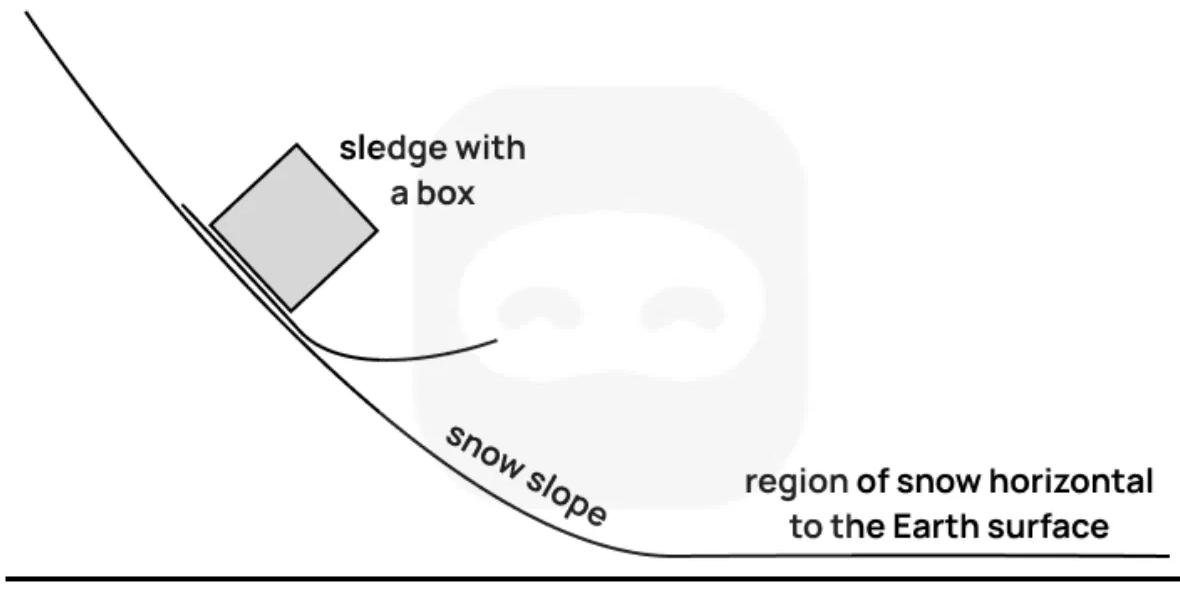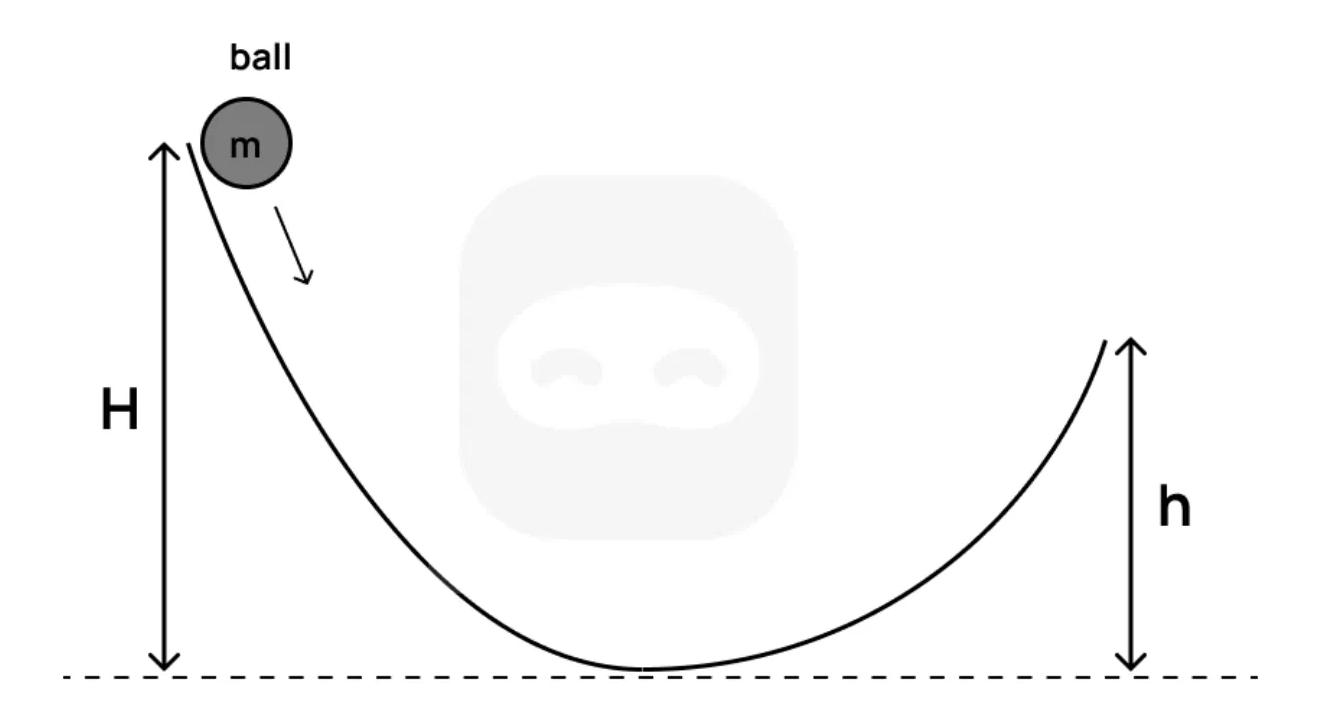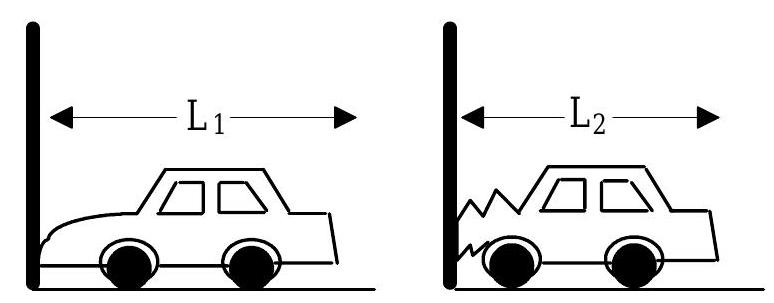Practice A.3 Work, energy and power with authentic IB Physics exam questions for both SL and HL students. This question bank mirrors Paper 1A, 1B, 2 structure, covering key topics like mechanics, thermodynamics, and waves. Get instant solutions, detailed explanations, and build exam confidence with questions in the style of IB examiners.
A sledge carrying a box slides down a smooth snow slope, starting from rest at the top. The slope curves smoothly until it becomes horizontal, as shown.
Assume there is no friction between the sledge and the snow. Air resistance is negligible.

State the energy transformations taking place as the sledge descends the slope.
The sledge and box together have a mass .
At the top of the slope, the sledge is at a vertical height above the horizontal surface. Determine an expression for the speed of the sledge when it reaches the horizontal snow region.
Explain why the normal force exerted by the snow changes as the sledge moves down the curved part of the slope.
After reaching the horizontal region, the sledge travels a distance before coming to rest. The coefficient of dynamic friction between the sledge and the snow in this region is . Draw a free-body diagram showing the forces acting on the sledge while it is moving horizontally.
Determine an expression for the distance in terms of , and .
A motor of input power 160 W raises a mass of 8.0 kg vertically at a constant speed of . What is the efficiency of the system?
A ball of mass is released from rest at a height above the ground. It slides down a smooth curved surface and rises up to a height on the opposite side.
Assume there is no friction except at the bottom of the curve where some mechanical energy is lost.

State the principle of conservation of mechanical energy for a frictionless system.
Outline why the ball does not reach the original height on the opposite side.
Assuming no friction except at the bottom, deduce an expression for the mechanical energy lost as the ball moves from height to height .
If , and , calculate the energy lost.
Calculate the percentage of mechanical energy lost during the motion.
This question is about the motion of a bicycle. A cyclist is moving up a slope that is at an angle of 19° to the horizontal. The mass of the cyclist and the bicycle is 85 kg.
Calculate the component of the weight of the cyclist and bicycle parallel to the slope.
Calculate the normal reaction force on the bicycle from the slope.
At the bottom of the slope the cyclist has a speed of 5.5 m s⁻¹. The cyclist stops pedalling and applies the brakes which provide an additional decelerating force of 250 N. Determine the distance taken for the cyclist to stop. Assume air resistance is negligible and that there are no other frictional forces.
A block of mass is pushed up a rough inclined plane at a constant velocity by an applied force parallel to the incline. The incline makes an angle with the horizontal, and the coefficient of kinetic friction between the block and the plane is .
Which of the following correctly expresses the work done by the applied force when the block moves a distance up the incline?
The work done by the centripetal force on an object that moves in a circle at a constant speed is
A hoist lifts a load vertically in . The motor providing the lift consumes a constant current of at . What is the efficiency of the system?
A motor lifts a 100.0 kg load vertically upward at a constant speed of . The power input to the motor is 900.0 W.
Calculate the useful power output of the motor.
Determine the efficiency of the motor.
This question is about finding the force that acts upon a car when it is in a head on collision.  In order to measure collision forces a car is crashed head-on into a flat, rigid barrier and the resulting crush distance is measured. The crush distance is the amount that the car collapses in coming to rest. In the above diagram the crush distance .
In order to measure collision forces a car is crashed head-on into a flat, rigid barrier and the resulting crush distance is measured. The crush distance is the amount that the car collapses in coming to rest. In the above diagram the crush distance .
Show that the average crush force exerted on a car of mass with impact speed is equal to .
The table below gives values of the crush distance, , for different impact speeds , of cars of the same make. (Uncertainties in measurement are not given.)
| 0 | 0 | 0 |
| 3.0 | 0.08 | .......... |
| 10.0 | 0.35 | .......... |
| 15.0 | 0.65 | .......... |
| 20.0 | 1.02 | .......... |
Complete the last column of the table.
Plot a graph of against .
Consider the situation in which a car of mass has an impact speed of . Use information from the graph you have drawn to find the average force exerted on the car during the collision as it is brought to rest.
Calculate the time it takes this car to come to rest from the moment of impact.
The tension in a horizontal spring is directly proportional to the extension of the spring. The energy stored in the spring at extension is . What is the work done by the spring when its extension changes from to ?